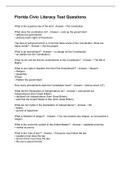College aantekeningen
Consumer Behavior lectures notes and practice exam questions
- Vak
- Instelling
A comprehensive overview of all the lecture notes of RSM's Marketing Management master core course Consumer Behavior. With these lecture notes I scored a 8.5 on the exam! At the end of the document there are also some practice exam questions.
[Meer zien]












